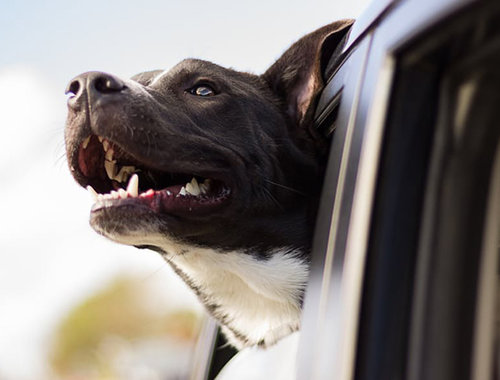Both cats and dogs have the same heart structure. Heart disease occurs when the heart is unable to effectively pump blood into the lungs to allow oxygenation or out to the body to deliver oxygen and remove the waste products.
Heart disease can be caused by valve leakage, muscle weakness, rhythm abnormality, or a congenital abnormality.
Three main types of heart disease
VALVULAR DISEASE - The heart has 4 valves: the mitral valve between the left atrium and left ventricle, the tricuspid valve between the right atrium and right ventricle, the pulmonic valve between the right ventricle and lungs and the aortic valve between the left ventricle and the aorta.
When a heart valve leaks, it changes the direction of blood flow which can develop into congestive heart failure. The term congestive heart failure means the blood is not being pumped appropriately to where it needs to go. Like traffic congestion the blood stagnates somewhere when it should be moving forward.
Acquired mitral valve disease is the most common heart disease. With this disease, the valve between the left chambers of the heart thickens causing some leakage of blood back into the previous chamber when the heart pumps. This is also the most common reason for a heart murmur in a dog. This syndrome is seen more often in small breed dogs. A physical exam shows a left sided murmur at the apex of the heart. These can be benign with no clinical signs for the life of the dog. However, any dog with a murmur who develops a cough, exercise intolerance, increased respiratory rate or effort should be checked. Chest films, echocardiogram, blood pressure and blood tests should all be used to monitor the condition.
Tricuspid valve disease is less often a problem though some dogs with chronic airway disease can have changes in this valve from higher pressure in their lungs (pulmonary hypertension).
Aortic valve disease is rare and is more often a congenital problem or an infection that can affect the valve if bacteria is circulating in the blood stream.
Pulmonic valve disease or narrowing is most often a congenital issue in breeds like Bulldogs and Mastiffs.
MYOCARDIAL DISEASE/ARRHYTHMIA - Diseases affecting the heart muscle itself or the electrical conduction through the heart which impacts the ability of the heart to pump.
Dilated cardiomyopathy is when the heart is not able to adequately contract and as a result the chambers enlarge, and the heart pump essentially cannot move blood forward. Larger breeds are more likely to get this disease.
Hypertrophic cardiomyopathy occurs when the heart muscle thickens and the chamber that holds blood becomes too small - like the walls of a room closing in. As a result, the heart cannot pump as much blood - causing the body to feel deprived of blood and oxygen. This type of myocardial disease is most common in cats with some breed predilection: Maine Coons, Ragdolls and a few others.
Arrhythmias occur when the electrical impulse that runs through the heart is abnormal causing the contraction of the heart to be altered and inefficient. Too rapid of a heart rate can cause inefficient pumping leading to collapse. In these dogs poor blood flow results as the heart acts like a spasming bowl of jelly rather than an efficient pump. Boxers and Doberman Pinschers are prone to this type of heart disease. Too slow of a heart rate can also cause the pump to fail and dogs with this disease may require a pacemaker to prevent fainting episodes.
CONGENITAL DISEASE AND BREED PREDILECTIONS - Congenital disease occurs when the development of the heart is altered in utero. Septal wall defects allow communication between chambers of the heart. Many of the congenital diseases we see are similar to those in humans. Listed below are breeds that might more commonly show these congenital findings:
Patent ductus arteriosis: Poodles, Chihuahuas, Maltese, Shetland Sheepdogs, Pomeranians, Bichon Frise, CKCS, German Shepherds, Newfoundlands and Labrador Retrievers. Females are more likely than males.
Pulmonic stenosis: Beagles, Samoyeds, Chihuahuas, English and French Bulldogs, Cocker Spaniels, Mastiffs, Newfoundlands, Labradors and other terriers and spaniels.
Aortic or subaortic stenosis: Golden Retrievers, Rottweilers, Mastiffs, Newfoundlands, Boxers and German Shepherds.
Atrial septal defects (ASD): Standard Poodles, Boxers and Samoyeds.
Ventricle septal defects (VSD): English Springer Spaniels, English Bulldogs, and Westies.
























